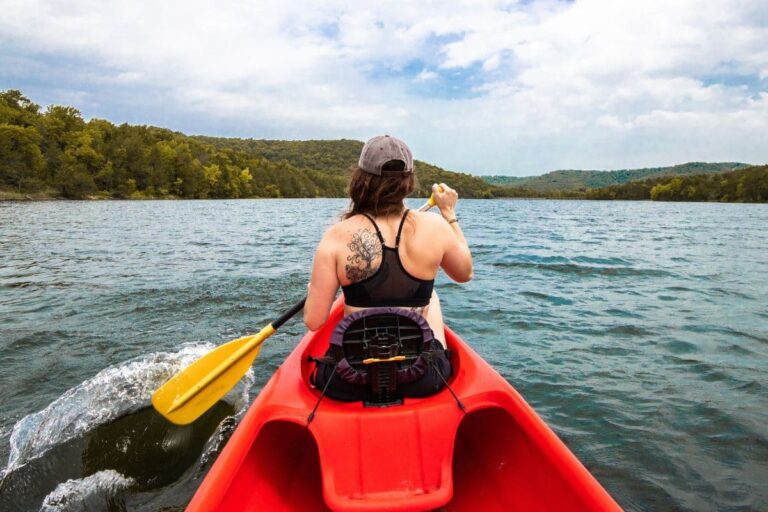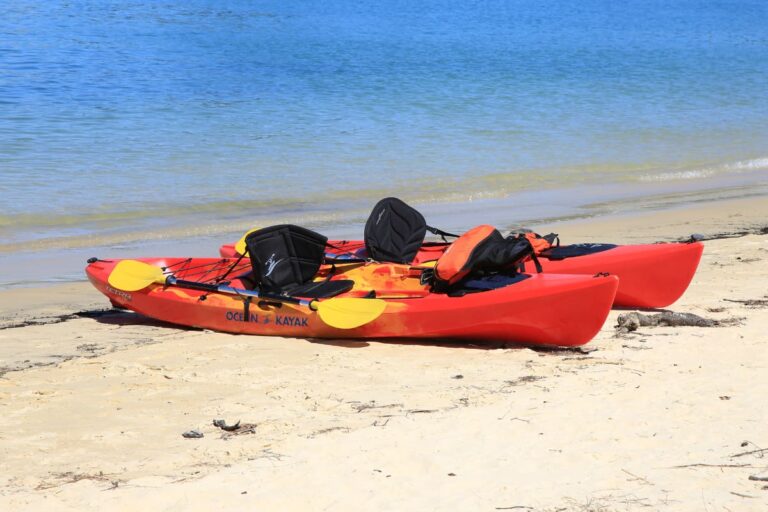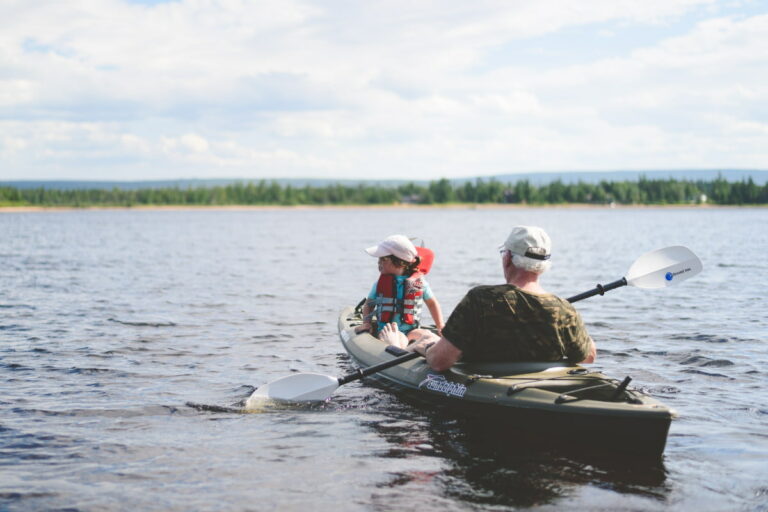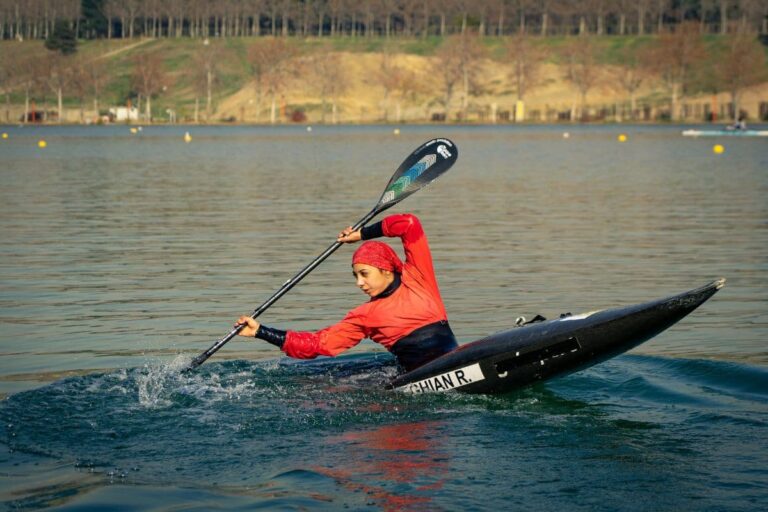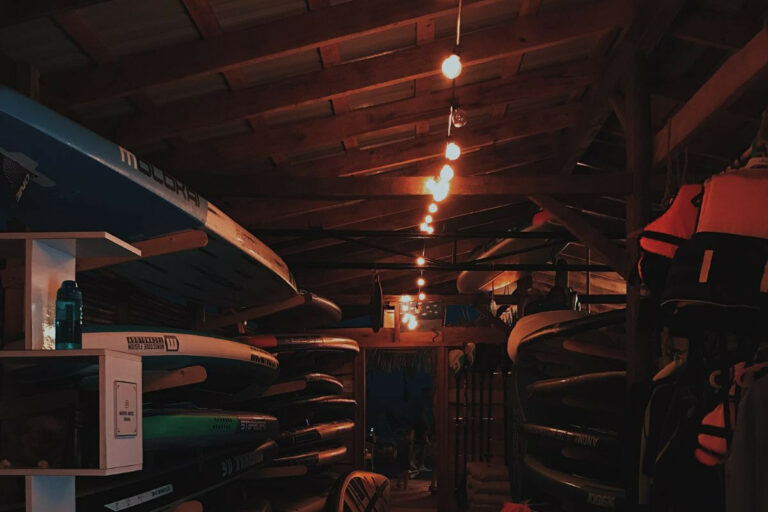Is It Safe To Kayak Around Alligators? Do Alligators Attack People In Kayaks?
In this article, we’ll examine whether kayaking in alligator-infested waters is safe, and if it’s true that alligators attack kayakers.
We’ll also share some tips about alligators’ behavior patterns, what to do if you encounter an alligator coming towards you, and discuss whether inflatable kayaks are riskier around alligators than hard-shelled boats.
Although attacks by these animals on kayakers are very rare, they do happen, so it’s important for paddlers to keep a safe distance.
Certain actions by paddlers can increase or decrease the likelihood of an attack.
The best way to avoid alligators is not to kayak in areas where they are present (such as the southern U.S.). Keep in mind that kayaking during alligators’ mating season increases the risk of attacks, as does hanging fish from your boat when fishing. If you should encounter an alligator, try to stay calm and keep your distance.
Alligators are top predators in various waterways around the country, and large enough to seriously injure or kill any kayaker who falls into the water.
However, the statistics on alligator attacks on kayakers are extremely low, and comparable to shark attacks on surfers.
That said, these attacks can happen, as one kayaker on North Carolina’s Waccamaw River discovered in 2020 – fortunately, he escaped without injury.
Most Alligator Attacks Occur When People Are Swimming Or Fishing
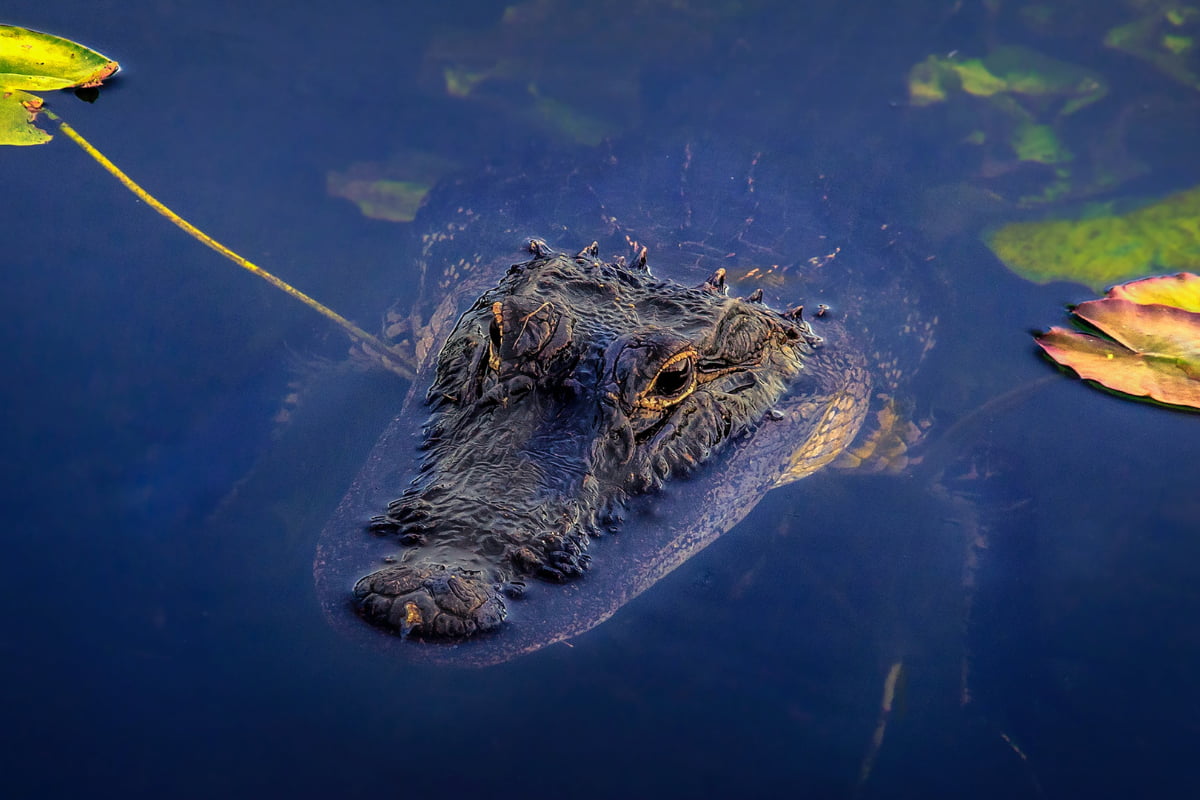
A kayak is an inanimate object that doesn’t make a lot of splashing sounds or give off warmth and chemical signals, like a swimmer.
Therefore, adult alligators usually won’t associate a kayak with prey, and thus they leave it alone – most of the time.
A U.S. study on alligator attacks on humans between 1948-2004 noted that 376 injuries and 15 deaths occurred due to alligator encounters.
The majority of these attacks happened when people were attempting to feed the alligators or interact with them, or during swimming or fishing.
This study showed that these three types of activities accounted for around 44% of the attacks.
Other activities that included attacks included wading or walking in water (5.3%), retrieving golf balls (9.5%), and snorkeling (4.3%).
Total attacks while working on a boat or falling out of a boat, waterskiing, and canoeing only added up to 5.2%.
Alligators are not usually aggressive towards humans, but if they have become habituated to humans because they’ve been fed, or a person approaches a bank on which mother alligators are with their baby alligators, attacks can occur.
It’s safe to assume that if you see young alligators, their mother will be close by to protect them, and a female alligator is aggressive when protecting her nest or young.
Similarly, male alligators are very aggressive during mating season, which is another time when fights are more likely to occur.
Tips To Help You Avoid Being Attacked While Kayaking Near Alligators
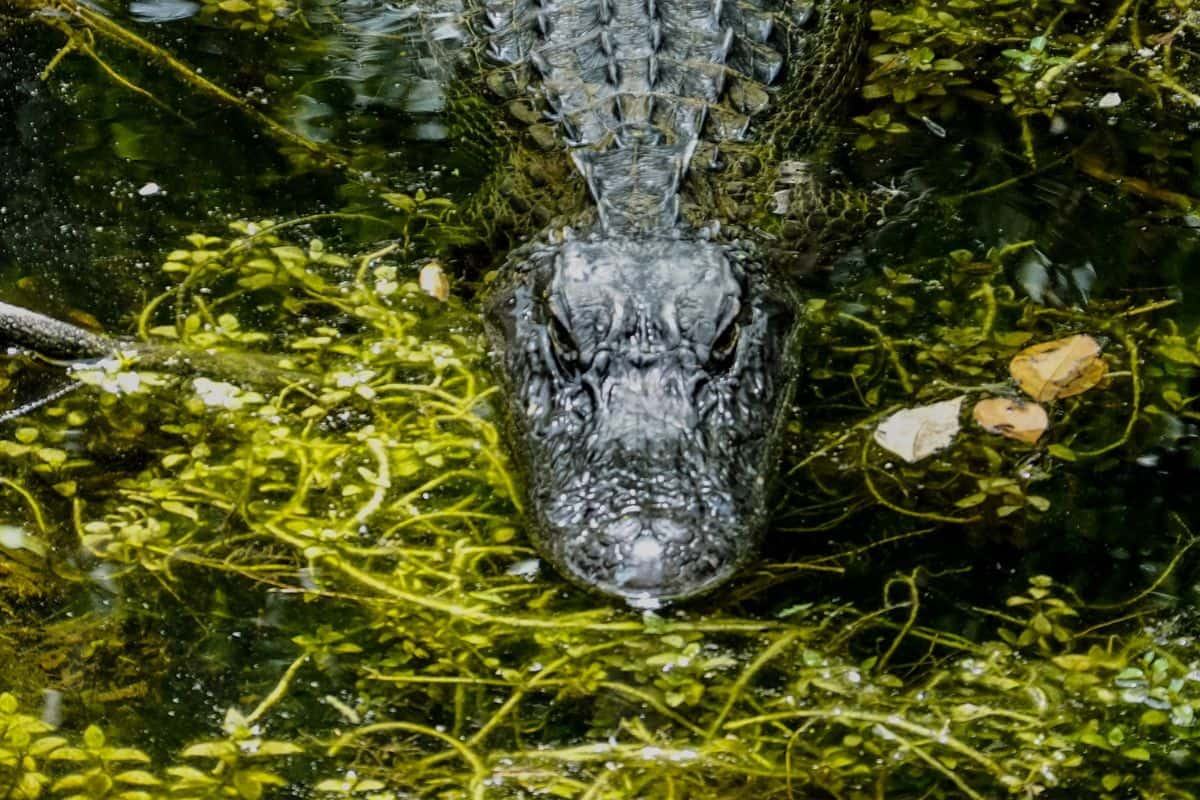
If you see an alligator, do not approach it or interact with it by striking it with a paddle, and don’t paddle your kayak over the top of the animal.
And always avoid feeding alligators.
Most of the time, when these animals are on the bank and see an approaching kayak, they tend to slip into the water, but this is generally a defensive, evasive action.
Agitated alligators have been known to swim underneath a kayak and overturn it, but this is also rare.
If you end up in the water, you could be in big trouble.
If an alligator doesn’t kill you by drowning you, even medium-sized alligators can amputate a human’s limbs and cause serious injuries.
If possible, it’s best to avoid kayaking between dusk and dawn, because alligators are cold-blooded, so this is when they are in active feeding mode.
If you’re out in a kayak fishing and alligators are around, try not to make any sudden movements when landing fish.
Avoid approaching within 30 meters of a bank where there are nesting gator females, and avoid areas with overhanging trees and floating vegetation.
Nesting females usually protect their nest areas, even after their eggs hatch.
Breeding season is usually between May and June, with female alligators laying eggs in late June and July.
It’s recommended that you do some research about when alligators tend to start breeding in your area and general alligator behavior.
It’s best to avoid paddling at these times, because the chances of being attacked by an alligator are higher.
Keep a safe and respectful distance from alligators, and avoid jerky movements that will attract their attention.
If at all possible, the best thing to do is avoid kayaking where you know alligators are present.
They submerge themselves completely in the water, with only their snout resurfacing periodically for air, which makes them difficult to spot.
When paddling with multiple kayakers, don’t let your kayaks pack together too tightly, because an alligator may see this as a threat, and think your group is a hunting party!
Also, never corner an alligator – try to keep a distance of at least 20 feet between your boat and the closest gator.
Additionally, try to avoid having multiple kayaks pointing at an alligator from different angles (like when you might be taking photographs of alligators lying in the sun).
If you know you’ll be kayaking in alligator country, leave your dogs at home, because their presence has been directly linked to reports of alligators attacking kayaks, since dogs smell more like prey.
If an alligator hisses at you, back off calmly because that’s its way of giving you warning signs.
If an alligator feels threatened, it will usually wave its tail and puff up and down in the water.
If it’s clapping its jaws at you, or sinking and coming up closer and closer to the kayak, heed those warning signs and move away quickly.
What To Do If You’re Approached By An Alligator
If an alligator approaches you, stay calm, smack the water hard with the flat end of your paddle, and make a loud noise.
Alligators are sensitive to sound and vibrations in the water, and will usually back away.
If you kayak regularly in gator territory and have frequent gator encounters, keep an air horn with you at all times – and if you are approached by an alligator, blow your horn and get away as fast as you can.
And remember, not to panic or splash the water frantically.
If the alligator comes too close for comfort before you notice its presence, smack it on the nose with your paddle.
Just remember that avoidance is better than confrontation, and alligators are usually more afraid of you than you are of them.
If an alligator swims towards your kayak, point the end of the kayak towards it and back-paddle away.
Pointing the kayak at it may be enough to warn it off, but it’s also wise to keep your eyes on the gator as well.
Are Inflatable Kayaks Riskier When Kayaking Around Alligators?
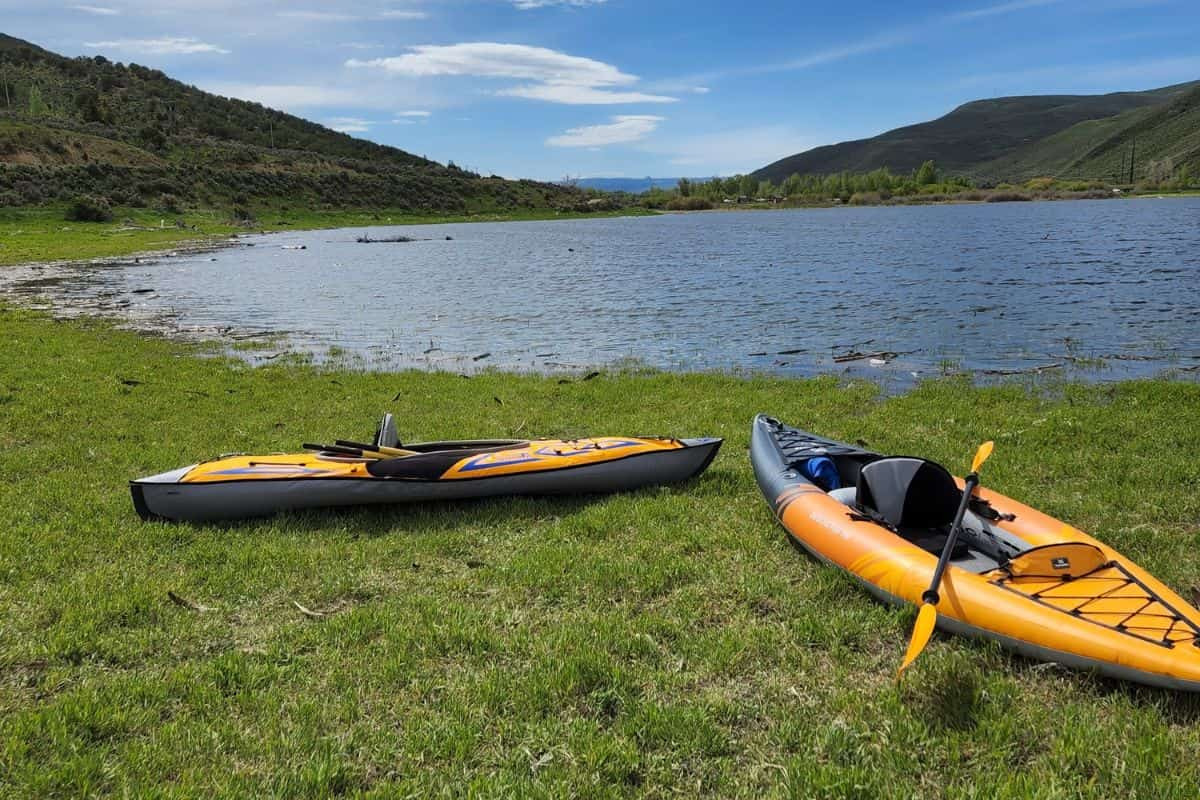
Kayaking in an inflatable kayak around alligators is a bit riskier than a hard-shelled kayak.
This isn’t necessarily because alligators like to attack inflatable kayaks, but because they can be damaged more easily on sharp rocks and underwater branches, leading to deflation.
You don’t want to end up in the water with an alligator, if you can help it.
In the unlikely event that an alligator does attack your inflatable kayak, its teeth can rip into it pretty severely, which means that you could end up in the water with a 12- or 15-foot reptile.
Inflatable kayaks are also much lighter than hard-shelled boats, and therefore easier to flip.
In February of 2020, an alligator left two kayakers stranded when it flipped their inflatable boat on the Econlockhatchee River in Florida – fortunately, no one was killed or injured.
While inflatable kayaks don’t sink easily, and a hard-shelled kayak won’t offer much protection from a direct alligator attack, the better choice is still the non-inflatable option.
Conclusion
There are plenty of beautiful kayaking destinations in the U.S. where there are no alligators.
American alligators are mostly found in areas of the southern United States on the gulf coast, including, North and South Carolina, Florida (Prairie Creek), Louisiana, Georgia, Mississippi, Alabama, the piney woods of Texas, Oklahoma, and Arkansas.
The Atchafalaya Basin swamp, in New Orleans, is also a notorious alligator habitat.
Having said that, the American alligator can sometimes be found in unexpected locations as well, such as in an Atlantic City swimming pool!
Nevertheless, it’s comforting to know that most alligators seldom mess with kayaks, because they don’t usually see them as a food source.
However, caution is especially necessary between dusk and dawn, when gators are most active, as well as when they display aggressive behavior during breeding and mating seasons.
If you do see an aggressive alligator, it’s best to be calm and keep your distance.
Ultimately, showing respect for a gator’s territory (or any wild animal’s natural habitat) will allow you to coexist safely, and enjoy a variety of beautiful paddling locations.
Table of Contents

